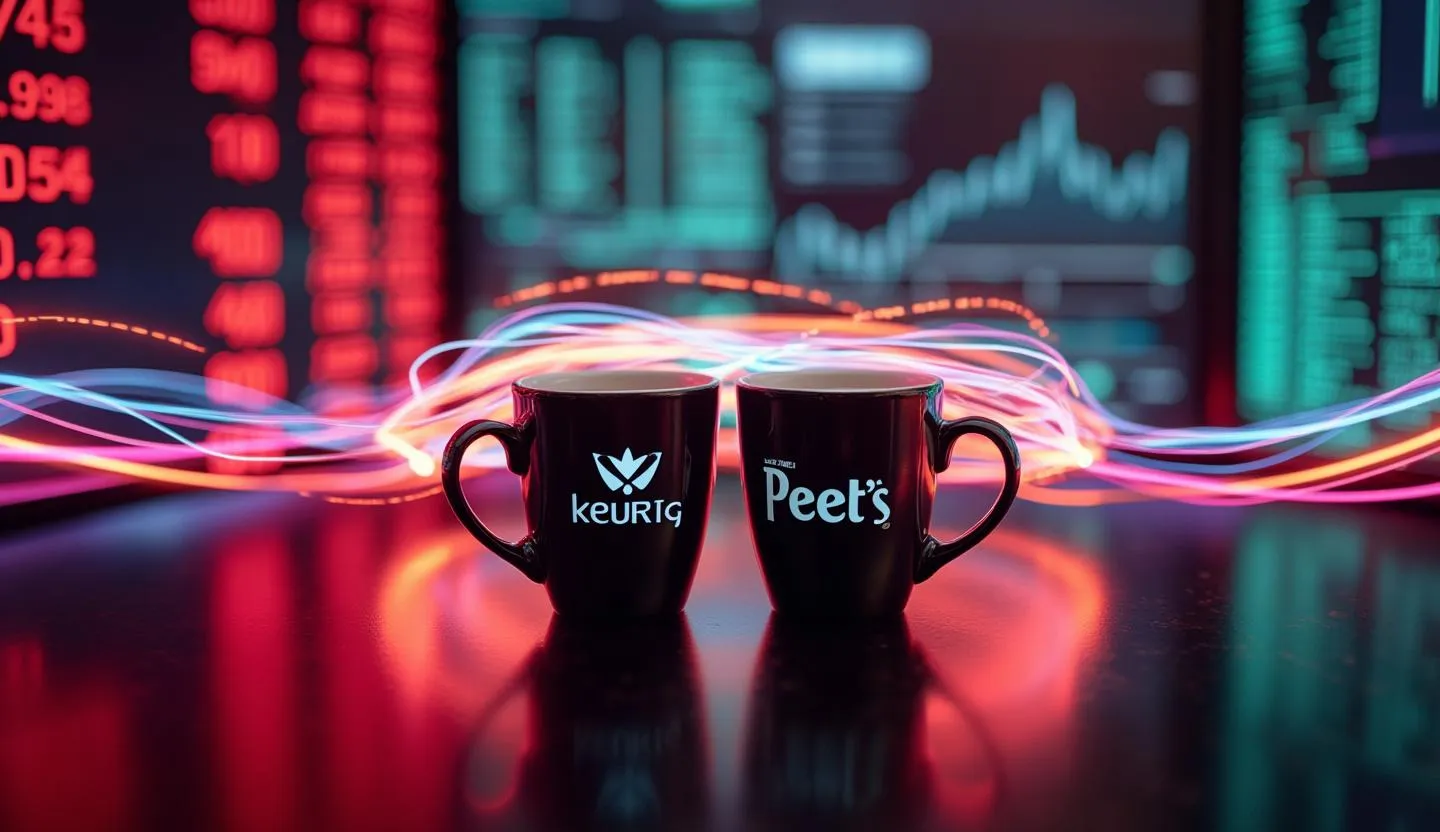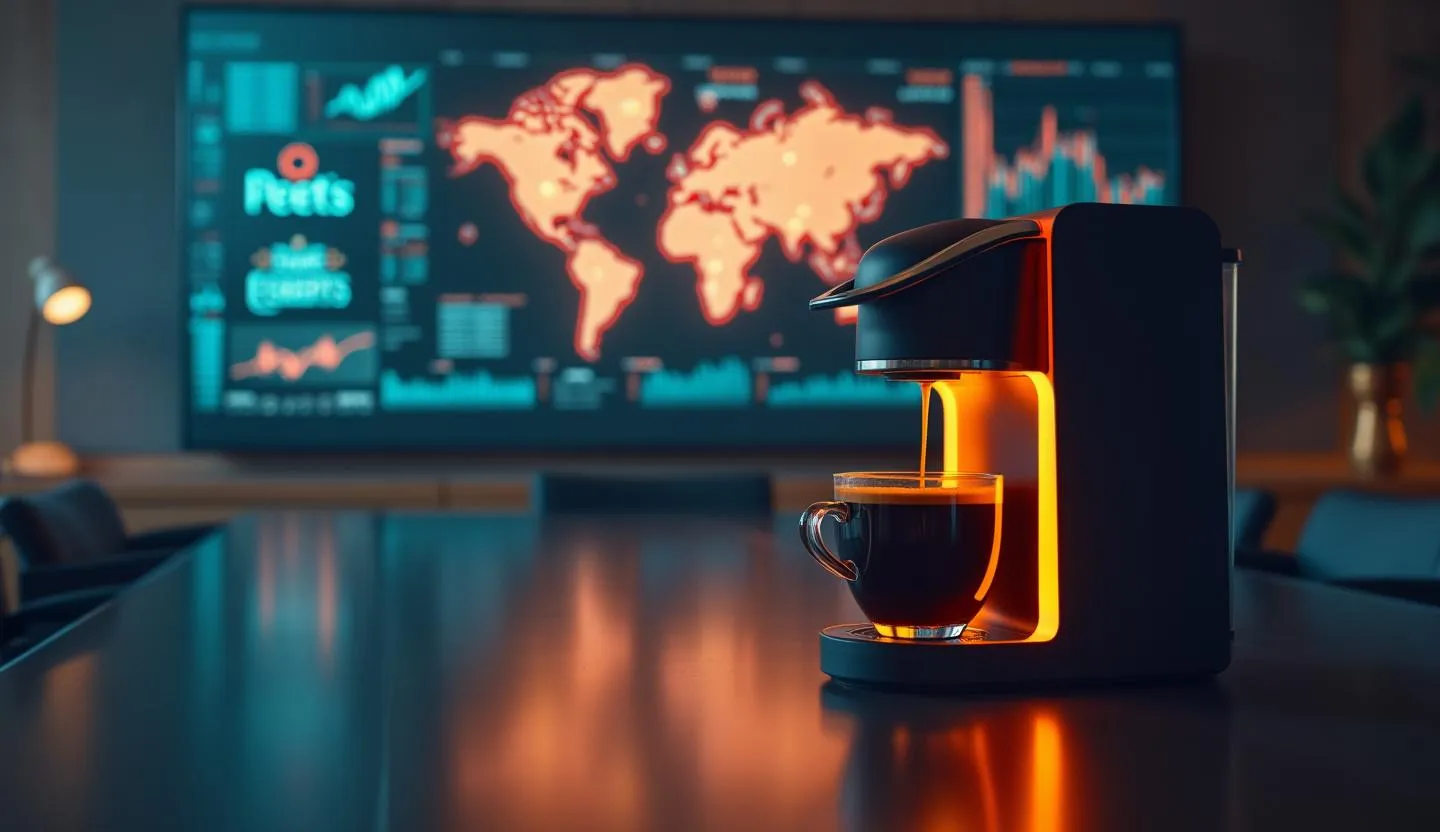Brewing Up a New Era: Keurig Dr Pepper’s Bold Move Redefines the Drink Industry
In a trading session marked by sector-wide volatility, few names stood out as dramatically as Keurig Dr Pepper Inc. (KDP). The beverage giant—already a household name in sodas, coffee, and energy drinks—shocked the market with its $18 billion acquisition of JDE Peet’s, the Dutch coffee conglomerate behind Peet’s, L’OR, Jacobs, Douwe Egberts, and more. Yet, the news wasn’t met with enthusiasm: KDP shares plunged over 11% on massive volume as investors digested both the scale of the deal and the surprise announcement that the company will split in two, creating separate coffee and beverage entities.
This pivotal moment for Keurig Dr Pepper not only positions it at the epicenter of global beverage consolidation, but also serves as a stark reminder of the risks and rewards inherent in transformative M&A—especially when the outcome will fundamentally reshape the business and its investment profile.
Key Takeaways
KDP shares plummeted 11.2% to $31.14 (down from $35.14), trading over 32.5 million shares—far above average volume.
Keurig Dr Pepper is acquiring JDE Peet’s for $18 billion and plans to split into two public companies: one focused on coffee, the other on beverages like Dr Pepper and 7UP.
Leadership transitions: CEO Tim Cofer to lead the beverage business; CFO Sudhanshu Priyadarshi to helm the new coffee company.
Market reaction reflects concerns over deal complexity, integration risk, and the uncertain value of the impending split.
Sector-wide volatility as investors reassess beverage and consumer staples stocks amid shifting competitive dynamics.
Decoding the Market Reaction and Strategic Vision
The Anatomy of a Selloff: Performance Overview
KDP’s shares cratered by 11.2% in today’s session, making it one of the S&P 500’s most notable decliners. The price dropped from a previous close of $35.14 to $31.14, a move accompanied by over 32.5 million shares traded—well above its typical daily volume.
This sharp drawdown underscores deep investor skepticism. Large-cap consumer staples companies rarely move double digits in a single day without a seismic catalyst. The $18 billion JDE Peet’s deal qualifies, but the additional announcement that KDP will split into two separate, publicly traded entities added fuel to the fire, creating both excitement about future unlocking of value and anxiety about short-term execution risk.
Strategic Rationale: Global Ambitions, Local Uncertainty
Keurig Dr Pepper’s rationale is clear: create a global coffee powerhouse and a focused beverage business. As reported in Fast Company:
“Through the complementary combination of Keurig and JDE Peet's, we are seizing an exceptional opportunity to create a global coffee giant,” said Tim Cofer, Keurig Dr Pepper’s CEO.
On completion of the deal, the coffee business will command roughly $16 billion in combined sales, with the beverage business generating about $11 billion. The structure is reminiscent of similar splits (like Kraft and Mondelez) where investor appetite differed for growth (coffee) versus legacy cash flow (soft drinks).
The company plans to headquarter the beverage business in Frisco, Texas, and the coffee business in Burlington, Massachusetts, with international operations based in Amsterdam. Cofer will lead beverages, while Sudhanshu Priyadarshi, currently KDP’s CFO, transitions to lead the coffee entity.
Analyst and Market Sentiment: A Clash of Narratives
The immediate verdict from Wall Street is caution—if not outright alarm. While analysts have long pushed for unlocking value in conglomerate business models, today’s steep selloff indicates the market is unconvinced that the benefits will outweigh the operational and financial risks. There are concerns about:
The integration of JDE Peet’s into KDP’s existing coffee operations
The execution risk associated with splitting management, assets, and brands
The unclear timeline and mechanics for the separation
Potential dilution or debt loads tied to the acquisition
Investor’s Business Daily summarized the sentiment:
“After the acquisition closes, KDP plans to separate into two U.S.-listed publicly traded companies.”
This kind of break-up often creates value but just as often leads to near-term volatility as fund managers and index providers rebalance holdings and as each new company finds its own investor base.
Sector Volatility and Competitive Pressures
Today’s session saw mixed action across U.S. equities, with the Dow Jones off more than 200 points and consumer staples among the weaker sectors. Notably, KDP’s outsized move was also highlighted by Benzinga:
“Keurig Dr Pepper, Valneva, Venu Holding and other big stocks moving lower on Monday.”
KDP’s plunge also comes against a backdrop of increasing competition in both the beverage and coffee spaces. The company’s aggressive move to consolidate coffee and then spin it out as a pure play signals both confidence in the global growth of premium coffee and a desire to focus the legacy beverage business on defending share against Coke, Pepsi, and new entrants in energy and health drinks.
Navigating the Uncertainty: What’s Next for Investors?
Keurig Dr Pepper’s deal is undoubtedly transformative. For longer-term investors, the prospect of owning shares in two focused, better-aligned companies may ultimately be attractive—especially if management can execute on integration and separation plans. For now, however, the market is pricing in a high degree of uncertainty and risk. Volatility is likely to remain elevated as new details emerge on deal structure, debt, and leadership transitions.
Bottom Line:
The $18 billion acquisition and planned split position KDP as the most pivotal mover in the consumer staples sector this session.
Massive selloff signals investor anxiety over deal complexity and execution.
The next several quarters will be critical, as management must deliver on both the integration of JDE Peet’s and the successful creation of two viable, separately traded businesses.
For self-directed investors, KDP’s story is a reminder that even defensive sectors can deliver outsized volatility when strategic pivots rewrite the investment narrative. The opportunity—and risk—of unlocking hidden value is real, but patience and close monitoring will be essential as the dust settles on this ambitious transformation.

.svg)
.svg)
.svg)
.svg)

.svg)

.svg)
















